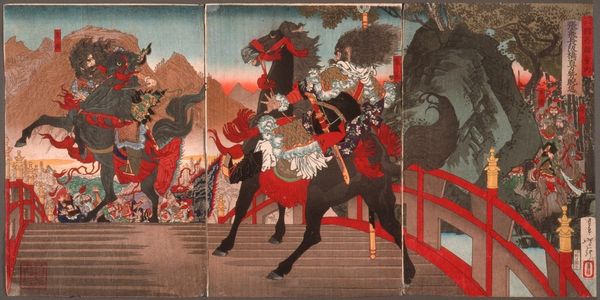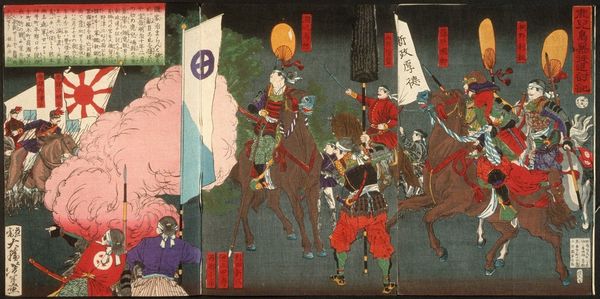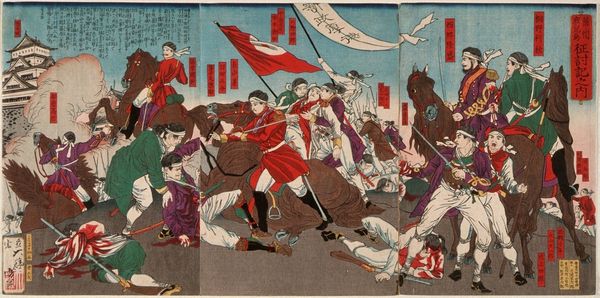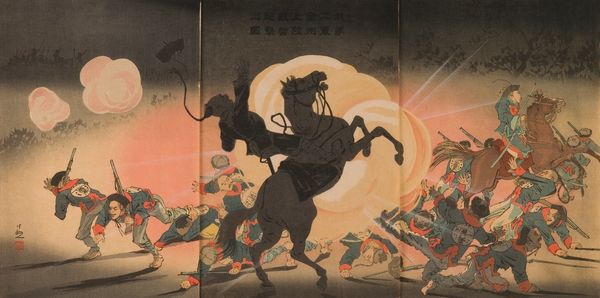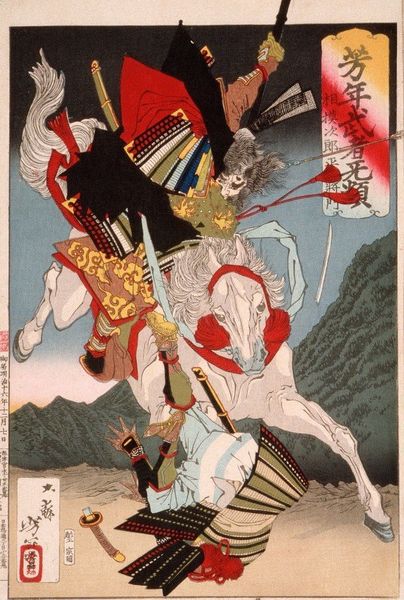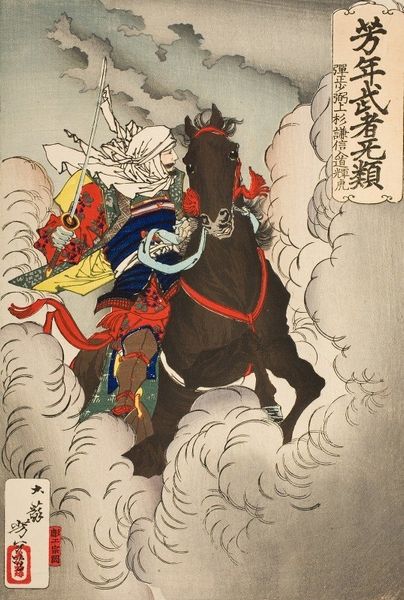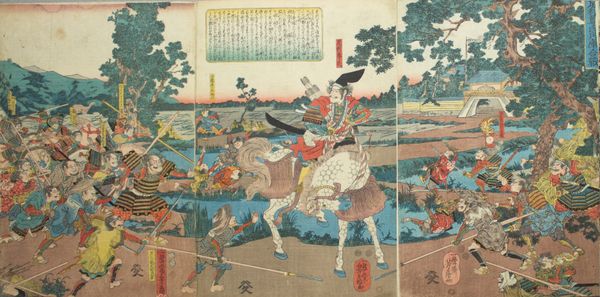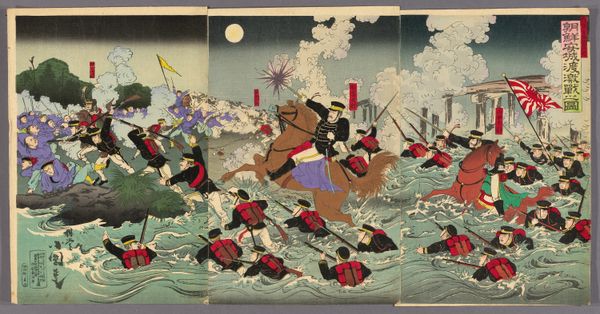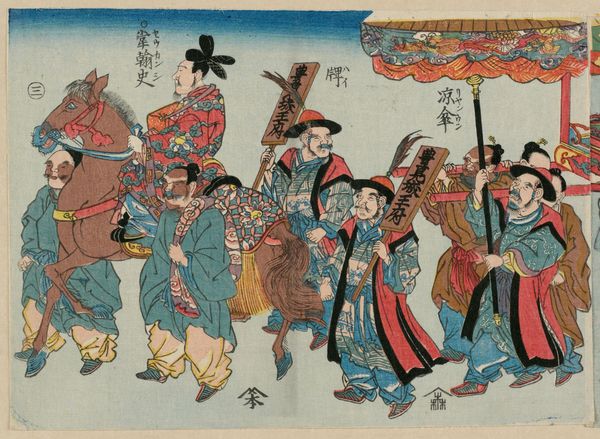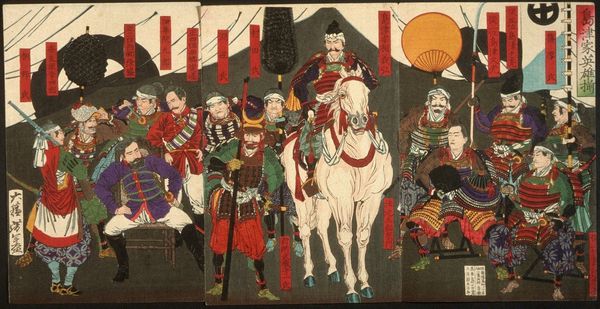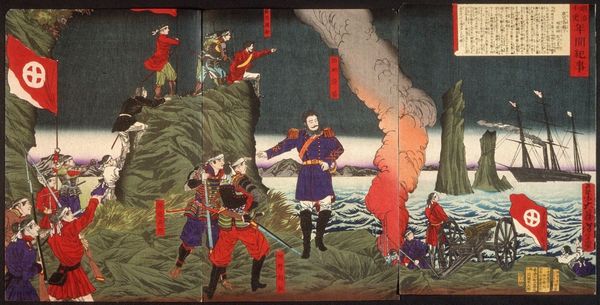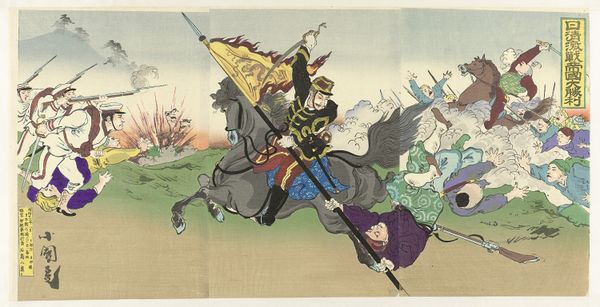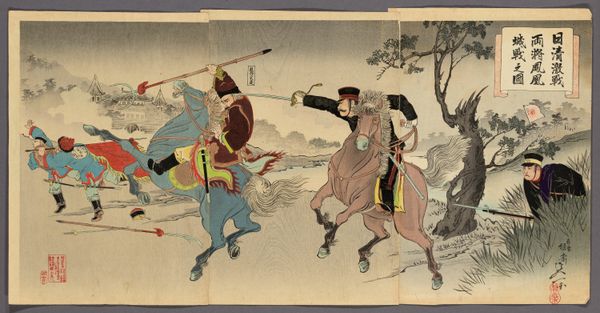
Copyright: Public Domain: Artvee
Curator: What strikes me immediately about this 1877 woodblock print, titled "The Death of Officer Murata" by Tsukioka Yoshitoshi, is the density and dynamic feeling amidst such carnage. It’s overwhelming. Editor: Yes, and that feeling is deliberately composed. Look at the billowing smoke and how it rises to the figures carrying the flag, then sinks back to the graphic depiction of fallen soldiers, punctuated with vivid reds. Blood and the Japanese flag almost become one, and blood functions as ornament here. Curator: Yoshitoshi was working in a tumultuous period of modernization in Japan, depicting events of the Satsuma Rebellion, a conflict fueled by resistance to the rapid changes imposed by the Meiji government. It's hard not to interpret the graphic violence as commentary on the conflict. Prints like this one were a crucial tool for disseminating narratives about national identity, both solidifying and sometimes questioning these narratives. Editor: Absolutely, and that flag itself—the rising sun—is laden with meaning, now, then and still, the soldiers and even Murata have a larger-than-life aspect as representative types more than specific individuals. Notice, the banner’s message floats across all three panels and joins with the rising sun in the background as if they are parts of a puzzle. Curator: Precisely, Yoshitoshi navigates the complex role of history painter at this moment. Ukiyo-e prints like this served a different purpose than official state portraiture in Europe for example. His print is far more engaged with the reality of war and sacrifice. This piece had the challenging task of narrating and normalizing state violence. Editor: Yet, it doesn't shy from portraying the horror, but what does it glorify? I keep coming back to the formal strength of this composition. Note how Yoshitoshi plays with the vertical elements to convey this story over these panels. The banners, bodies and battlefield props work together as characters and guideposts. Curator: Ultimately, Yoshitoshi captures the trauma of societal change through vivid images and symbolic layering, a potent statement reflecting a deeply divided society grappling with its identity and future. Editor: Right, seeing how symbols acquire so much visual force—it becomes a meditation on both the power and burden of imagery and identity.
Comments
No comments
Be the first to comment and join the conversation on the ultimate creative platform.
